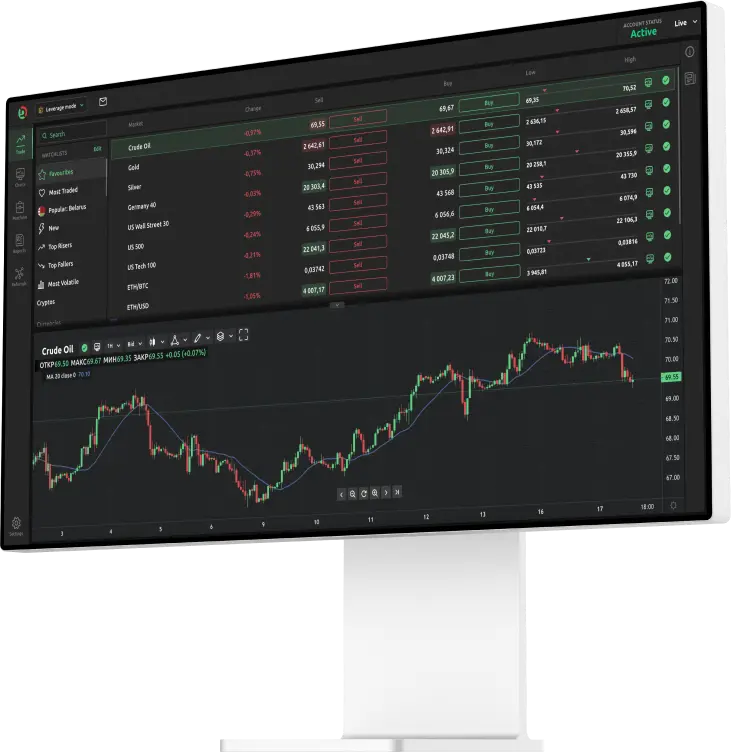With bitcoin plunging and dragging other cryptocurrencies with it, is the party over?

Contents
- Interest rate rise
- Asset selloff
- Crypto winter
- Geopolitical tension
- Countries weighing up bans
- US regulation
- Is the party over?
- Final thoughts
From bitcoin crashing by 25% in the first 30 days of 2022 and down 50% compared to November 2021, to ethereum, down almost 40% in the same period, the crypto world is reeling. With close to $1.5trn (£1.1trn) wiped off from the overall crypto market, the heady dreams of the anti-establishment crypto bros, buoyed by the ‘number go up’ philosophy, may be falling apart beneath their feet – at least for the moment.
But is it just for the moment? Is it just another crypto winter? Crypto is, after all, no stranger to heady highs and lurching nosedives. However, given the way the macro tectonic plates are shifting, with infamous bubble prophet Jeremy Grantham of the Boston-based asset management firm GMO warning that we are in “bubble extravaganza” (up from “epic bubble” last year), does this bear rally signal something new? Can crypto ride on the ecstatic, groundless highs of the past year again, or will risk-adverse markets, interest rate hikes and a regulatory crackdown end the crypto party forever?
The question becomes, (as touched upon Is Warren Buffett right about cryptocurrencies?) has crypto become a symptom of the bubble and the mania which has, fuelled by cheap money sloshing around, bloated everything from stocks to property to bonds? Some, like Grantham for example, would argue the existence of crypto and the eyewatering investments that have been pumped into it, despite its lack of utility, is a perfect indication of how crazy everything has got.
Others, while conceding that perhaps crypto’s valuations have elements of the mind-bending or unreal, believe the value of the technology justifies its value over the long term. They say that after the devastating crash stampeding everything in its path, Bitcoin and its allies will rise like the phoenix from the ashes to the sound of applause, to replace a broken system. Will retail investors, many of whom had their first taste of the thrills of the market through crypto, be the losers? With a lack of experience in managing nerves and a lack of financial acumen to profit from downturns, will it be these small fish who end up getting fried?
Before attempting to answer these questions, let’s look at why this ‘thumping’ has taken place and discuss whether we are indeed in a crypto winter.
Interest rate rise
On 26 January, a historically dovish US Federal Reserve changed its tune, stating it was likely to raise interest rates as early as March as well as reiterating its intention to end bond buybacks at the same time. This decision comes in the wake of rising inflation, prompting the Fed to, as stated by US central bank chief Jerome Powell during a conference “move steadily away from the very highly accommodative monetary policy we put in place to deal with the economic effects of the pandemic”.
In December, the US Bureau of Labor Statistics reported how US inflation had risen to 6.8% over the past year, the highest since 1982. No longer perceived as a “transitory situation”, this increasing inflation, affecting everything from savings to the cost of food and fuel, has in turn rocked the markets.
Cheap money has helped to power the rocketing prices of assets, commodities, real estate and crypto. When interest rates rise, however, money supply shrinks and the cost of borrowing increases. Investors flee to safer assets such as treasury bills and bonds.
Mike Novogratz, CEO of Galaxy Investment Partners which focuses on cryptocurrency investments such as bitcoin and ethereum, acknowledged the impact of loose monetary policy, telling MarketWatch: “We had an environment where the Fed was pumping in money nonstop, but we also had it where the Treasury was giving people lots of money. You had Treasury stimulus, you had Fed stimulus… that created a tremendous tailwind for asset prices, so growth-equity stocks looked like they were going to infinity, baseball cars, watches, crypto.”
How have assets been affected? Let’s take a look.
Asset selloff
Increasing interest rates invariably leads to businesses cutting back on spending and investing, and cutting back on growth, causing earnings to fall, in turn lowering the price of their stock.
In January 2022, the Nasdaq took a 15% nosedive, while the Dow Jones was down over 5%. The S&P 500 has also suffered a dip, with over 8% of its value erased as of 27 January.
From SoftBank stocks tumbling 9% to Netflix’s stock price dropping more than 40% from its October highs, the stock selloff has begun.
In response to selloffs, largely due to hawkish news from the Fed, Tancredi Cordero, founder of Kuros Associates, told the FT: “It’s very much an environment where one should be short for at least another month… anything that is speculative and hypey, and long companies that benefit from rate hikes”.
How has this impacted a crypto selloff, in turn plunging us deep into a crypto winter of 2022?
Crypto winter
Cryptocurrencies, which have very much benefitted from easy monetary policy (rather ironically due to their anti-establishment stance) have, unsurprisingly, experienced a more extreme version of the crash which stocks, especially tech stocks, are suffering.
While plunges in crypto prices are not a new phenomenon (take the late 2017 crash in crypto prices, which led to a three-month-long ‘Crypto Winter’, or the June 2021 crash, which saw bitcoin drop to lows of $30,000), the macro climate has changed, meaning the crash must be viewed in a different light.
Indeed, while some ever-devoted crypto bulls may argue this is just more of the same, and call for investors to buckle down and ride the wave, previous bouts of extreme volatility have not occurred within the context of a major wider stock selloff, or a raising of interest rates.
Risky assets are sold off as interest rates rise, meaning in simplest terms, crypto is the first to be disposed as investors flee for safer grounds.
It is certainly clear that there has been a major selloff. According to CoinMetrics on 27 January, the number of active addresses, a metric by which to judge investor sentiment, has fallen by more than 17% compared to the start of 2022 and more than 7% in the preceding year.
Geopolitical tension
Late in January fears of a Russian attack on Ukraine contributed to investors seeking shelter in less riskier assets. If the conflict turned serious, which, given thousands of Russian soldiers were deployed on the border and five soldiers were killed in one day, was not unlikely, there would be serious effects for the markets. With Western countries increasingly getting involved to put a stop to the potential invasion, with Germany pledging to axe the Nord Stream 2 pipeline should Russia follow through, any conflict would not just affect relations between Ukraine and Russia. It would hit Russia’s relations with many other countries, which could impose sanctions. The results, from increasing bond prices to increased food inflation to decreased oil supply, would be felt globally.
Countries weighing up bans
Adding fuel to the fire, Russia’s central bank recently proposed an outright ban on cryptocurrencies, further lowering investors’ confidence. In a consultation paper published on 20 January, the Bank of Russia listed risks to retail investors, including the potential for cryptocurrencies to bolster nefarious activities and the environmental unsustainability of the mining process as some of the reasons why an outright ban should take place.
The Russian president, Vladimir Putin has since spoken against the Bank of Russia, laying out the “competitive advantages” of Russia in capitalising on the crypto industry, not least because of its “surplus of electricity”, which could be used to mine cryptocurrencies.
Certainly the increasing crackdown of countries against cryptocurrencies, specifically crypto mining, does nothing to bolster confidence in the sector. Kazakhstan, for example, a mining hotspot after China’s crackdown last year, cut off energy supply to crypto miners on 24 January after Kazakhstan’s energy grid struggled to meet demand for power. Energy is due to be cut off until the end of the month, according to a memo from KEGOC, the country’s national grid operator.
Similarly in Pakistan, the state bank called for a blanket ban on cryptocurrencies. While the country’s high court has not yet acted on such a recommendation, it is weighing up the legality and safety of cryptocurrency.
US regulation
As if the sector has not taken enough of a pummelling over the opening weeks of 2022, regulators in the United States appear to be intensifying demands to properly regulate the ‘Wild West’ of crypto.
In the last week of January, Bloomberg reported how the Biden administration is preparing a strategy to tackle crypto assets. The outcome of discussions among senior administration officials will result in an executive order.
Gary Gensler, chair of the US Securities and Exchange Commission, has been vocal, especially as of late, about how cryptocurrencies require more rigorous oversight and regulation. Despite not being against crypto wholesale, Gensler is pushing to regulate crypto exchanges as the major gatekeepers.
Is the party over?
While fears of incoming regulation have loomed for a long time now, and the unsustainability of bitcoin from an environmental standpoint has long been touted, all without severely hurting crypto prices, these factors combined with a changing macro climate could mean this particular crypto winter is not so seasonal.
Previous crypto winters have occurred within an extremely favourable set of market conditions. With geopolitical tensions turning investors risk-averse, the sustainability argument becoming too loud to ignore and multiple countries weighing up bans on cryptocurrencies, it is hard to argue this is a transitory phase. Added to this, the investment which has been poured in to altcoins, not dissimilar to the dot.com era, may well dry up, now that interest rates are being raised and money is becoming not so cheap.
Saying this, plenty of crypto enthusiasts are arguing that crypto, while impacted by all these factors in the short term, will, over the long term, because of the inherent value of the blockchain technology, rise again, potentially stronger, albeit in a different form.
A thought perhaps should be extended to the retail investors from across the world, especially in developing countries, some of which have put all their savings in crypto. Should the crash get any worse, they are likely to seriously suffer. Sold a dream of revolution and equality and accessiblity to a financial system that was previously the remit of the elite, these individuals, who may have been given their first taste of the markets in the crypto, may be left with more than a bad taste in their mouth.
The extent to which everyone should be able to play the markets, regardless of their financial experience, is definitely up for debate . Retail investors have been used as plankton to feed the ever-hungry beast. While the number goes up, everyone wins; however when a crash happens, the playing field is far from equal. Experienced and institutional investors have been found to buy the dips and ride it up, while retail purchasers tend to buy high, and if the price goes down, sell cheap. The question thus becomes, is there a value in total accessiblity? Is it a step forward? Or is it dangerously expolitative? Is the enemy the faceless suited man pushing numbers in glass buildings within a regulated, albeit highly imperfect system? Or the shirtless crypto expert, entirely untethered, slumped on a deck chair in California, pumping up coins with no thought to the possible implications of investors without a clue how to play the markets, investing in them and losing everything?
Final thoughts
While it remains to be seen how the future will pan out for this still very nascent sector, what is clear is that numbers can only keep going up for so long, before they come hurtling back down to the ground.
Like an uninvited guest, market realities, so far shut out by artificial monetary policy, has found a way in, thoroughly spoiling the party, and leaving the possibility of untold potential market collapse in their wake.
Bloated crypto prices creates, rather ironically given its love for decentralisation, another single point of failure which could, if a complete crypto crash occurs, have untold knock-on effects to the rest of the global economy.
A crypto winter is a sharp slump, followed by a drop-off in trading and months of depressed trading. Many experts think a ‘crypto winter’ is coming, while some think it is already here. It is difficult to make a definitive next ‘crypto winter’ prediction, partly because of the many unknowns and partly because it is often hard to tell when winter has arrived until the blizzards are actually raging.
The last crypto winter was in June 2021.
We could be heading into the next crypto winter; however, we may need to brace ourselves for a slump over the longer term due to macroeconomic factors not present during previous crypto winters.
It is not entirely impossible that a crypto winter might not be coming, and crypto will bounce back as investors confidence increases; however this seems an unlikely crypto winter prediction.

